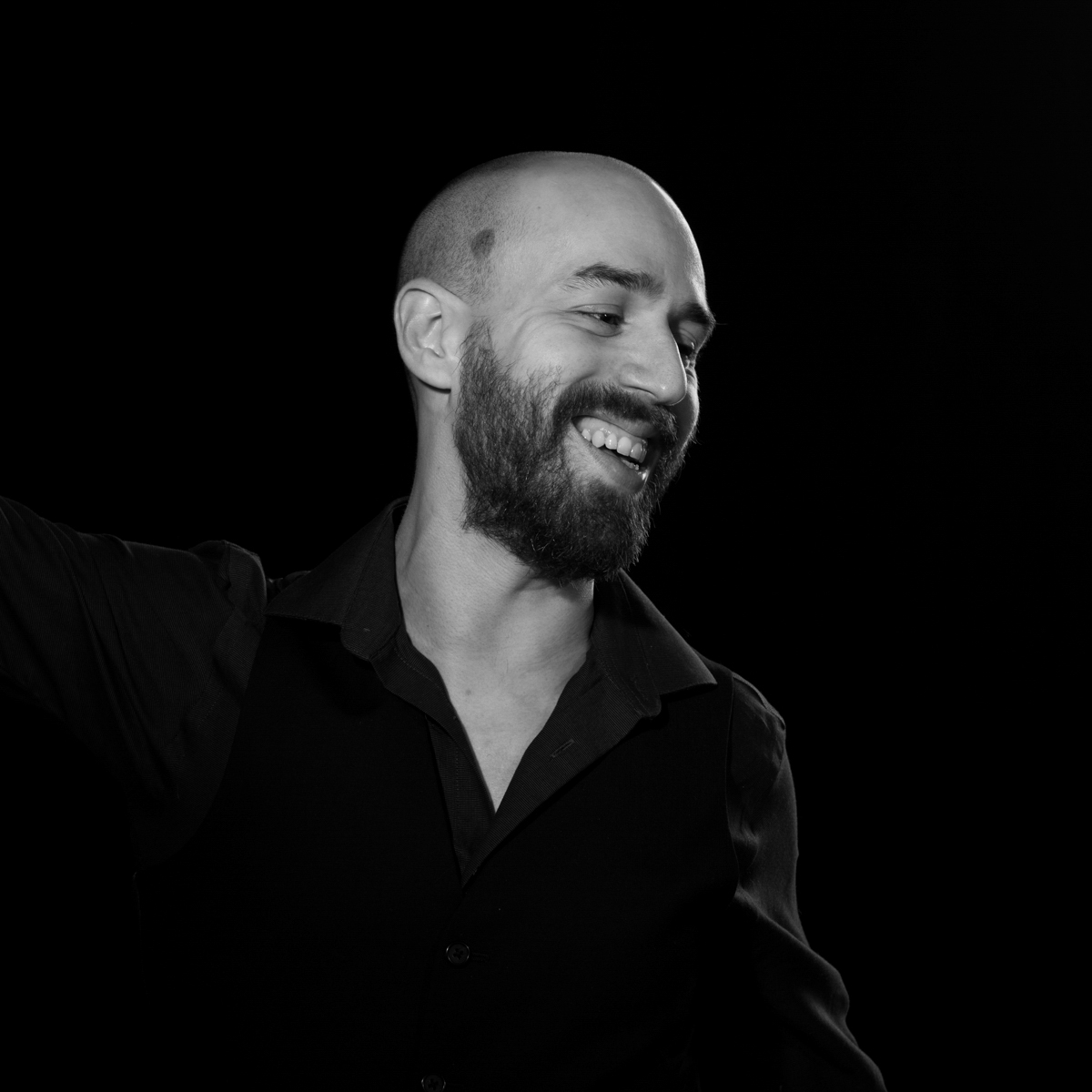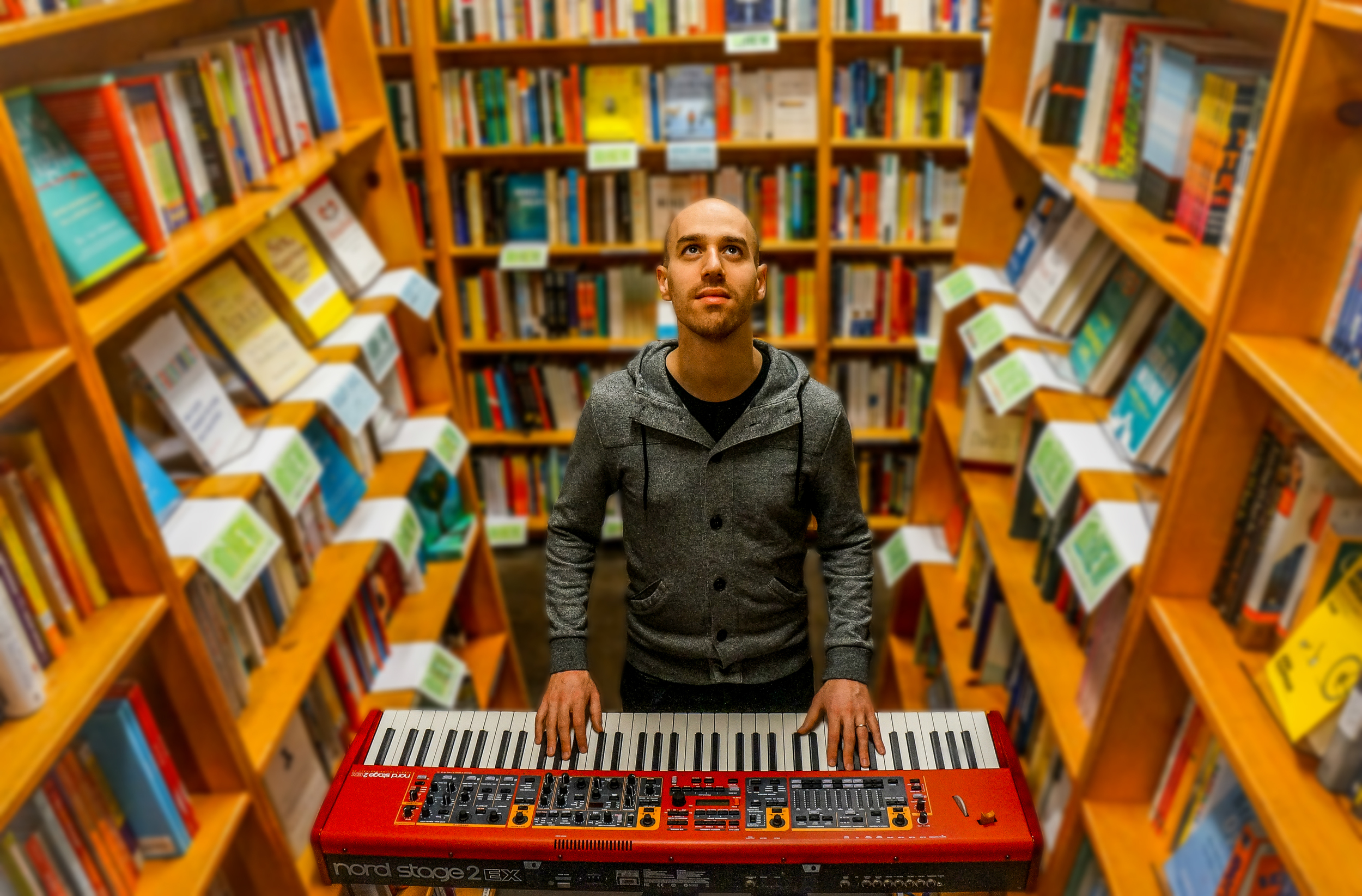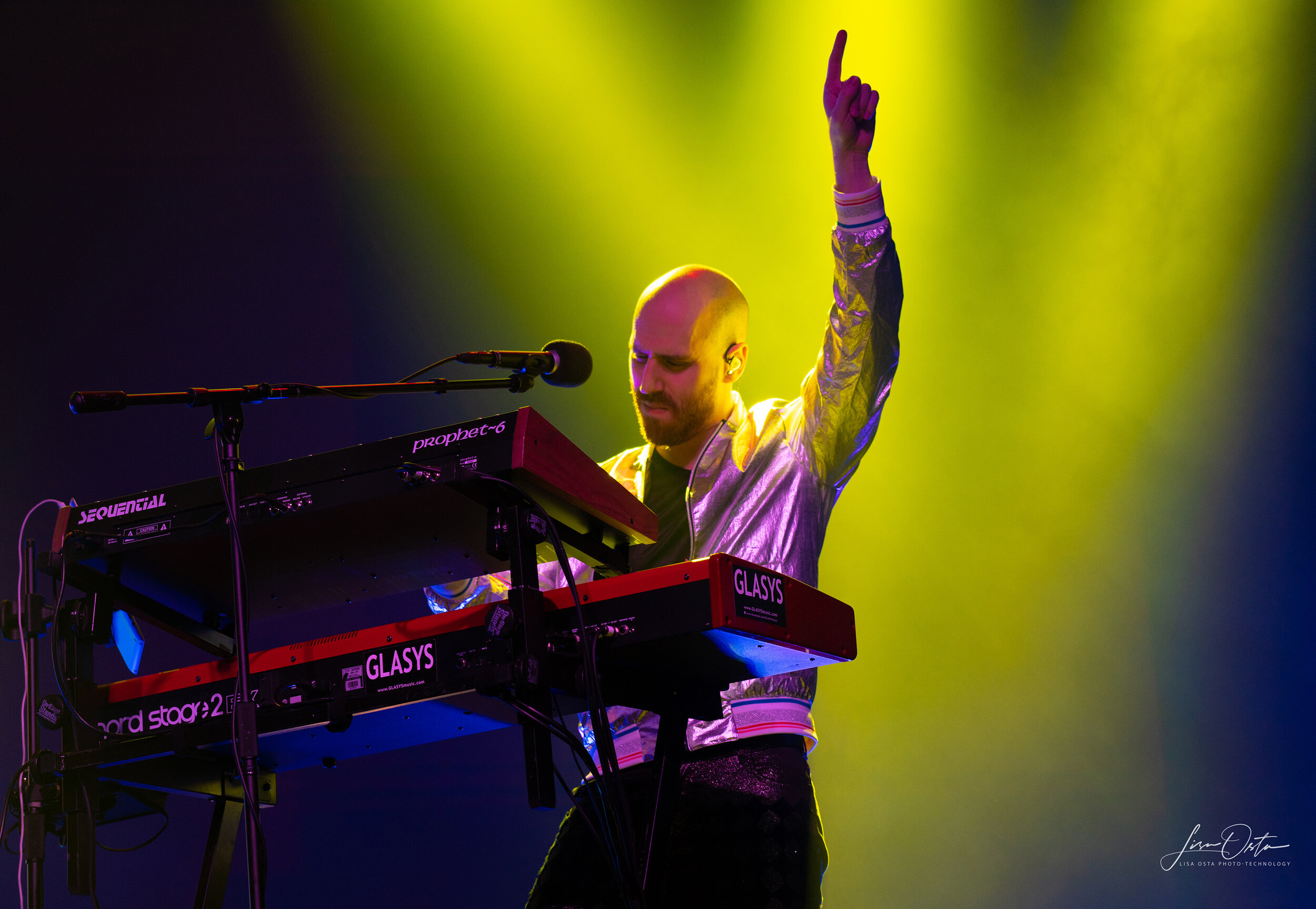Did you know you can create drawings with a piano keyboard? It’s called MIDI art, and GLASYS is one of the most popular artists doing it on YouTube today.
GLASYS (Gil Assayas) is also a pianist, producer, synthesist, and vocalist. He has crossed the 10M views mark on YouTube, he’s collaborated with T-Pain, and he’s even been featured on the GRAMMYS website.
Listen to GLASYS and Lisa discuss his musical roots, love/hate relationship with social media, and why video games are awesome on this episode of the Pianote podcast. Or keep reading to learn more!
Get exclusive access to world-class pianists and what makes them tick. Subscribe to The Note today.
“MIDI” stands for “musical instrument digital interface.” It allows musical instruments and computers to talk to each other. You can plug a MIDI controller (it looks like a miniature keyboard) into a DAW (digital audio workstation) to record pitches. The pitches are then mapped onto the software’s piano roll. Play the right notes in the right order, at the right speed, and you can create a visual art piece using sound!
Here’s GLASYS demonstrating exactly how he does this:
Artists have been creating MIDI art for a while. But GLASYS does it live, which makes it extra challenging. There is more than one way to create an image, so GLASYS tries to find unique scales and chords that fit the vibe of the image.
Here are more examples:
GLASYS is from Israel and only started living in the United States about six years ago. He grew up in a musical family. His parents were both orchestra musicians and his brother is a pianist. GLASYS began his musical journey on the violin, but felt there was too much pressure on him to become a classical soloist.
Piano became GLASYS’ second instrument because his parents believed it would help him learn theory. At first, GLASYS wasn’t super interested in his classical lessons, but jazz piano pulled him in and got him to take music seriously. Then, after high school, he started exploring alternative rock, synthesizers, and sound design, and began performing in gigs.

Learn piano the way you want, whenever you want, as often as you want. Try Pianote for seven days.
TRY PIANOTE FOR FREEWith YouTube videos that have surpassed the 10 million views, GLASYS is seen as a viral internet success. But he admits he has a “love/hate relationship” with social media.
The awesome thing about social media is you can connect with people you wouldn’t otherwise meet, all without a middleman. But it’s also difficult to get people’s attention. Everyone is so inundated with content; simply making good music is not enough. You need an interesting visual component in order to be successful on social media.

If you want to boost your social media presence as an artist, GLASYS recommends focusing less on self-promotion and more on creating interesting content that provides value to your audience. Also: “I never recommend releasing something the same day you make it.” This includes TikTok creations!
GLASYS re-arranges a prelude by his favorite composer (Chopin) using synthesizers.
GLASYS performs two original compositions for Nord World Sessions.
If you are a creator and a composer, then write music that’ll challenge you and practice that. And that will be rewarding on many different levels because you’ll be improving your technique but you’ll also be creating something cool to share with people later.
GLASYS

Watch one of GLASYS’ MIDI art videos, and it’s clear he has incredible hand independence. Most impressive is the left-hand technique he has developed to play drums and piano at the same time, thanks to a custom-built MIDI keyboard with arcade buttons:
How does GLASYS practice? Well, for starters, he reminds us that as viewers, we only see the end result; we don’t see the hours of practice that goes into making videos. In fact, you can watch a compilation of his mistakes here.
“Slow practice is important,” says GLASYS, and it’s important not to be too eager. Another way to practice is to create something for the purpose of practicing a skill. That way, you’ll be doing what you love (being creative) and honing technical skills. He demonstrates this in a collab jam video he made with some friends to practice his left-hand drumming technique.
“Write music that’ll challenge you and practice that,” says GLASYS. “That will be rewarding on many different levels because you’ll be improving your technique, but you’ll also be creating something cool to share with people later.”
Don’t obsess over [social media]. Just create.
GLASYS

When it comes to the importance of theory, GLASYS acknowledges that learning it when he was younger helped with producing and composing. However, he cautions against learning theory in theory only. “You can watch a hundred theory videos on YouTube, but if you’re not applying them, then you’re not gonna gain anything from that,” he says. “You’re just gonna forget it all. Especially on piano where every key has different shapes.” That’s why it’s so important to practice your chords and scales in different keys, not just C Major!
🎹 WANT AN EASY WAY TO MASTER ALL YOUR CHORDS AND SCALES? Look no further than the Chords & Scales book, the ultimate resource for piano players! Thousands of piano players around the world are already using this book every time they practice. Grab yours today.While it’s the most popular thing on his channel right now, creating MIDI art is a recent discovery for GLASYS. He’s always been on a road of discovery when it comes to music. “I’m always excited to explore new territories. That’s kinda what keeps me going. I like to challenge myself and try new things.”

But GLASYS’ biggest inspiration is probably video games. He recalls turning on his Gameboy just to listen to Zelda music. “Even with the basic chip tune sound, I just found the music so gorgeous,” he says. “Beautiful harmonies and melodies. Lots of interesting modulations and stuff like that . . . It always has this sense of wonder and mystery to it, and [it] just makes you want to go on an adventure.” No wonder GLASYS is working on an album of video game music, inspired by chip tunes and 8-bit sound.
If you want more GLASYS, check out Gil’s YouTube channel and Instagram page. And don’t forget to subscribe to the Pianote podcast on Spotify!
More interviews:
Learn piano the way you want, whenever you want, as often as you want. Try Pianote for seven days.
TRY PIANOTE FOR FREECharmaine Li is a Vancouver writer who has played piano for over 20 years. She holds an Associate diploma (ARCT) from the Royal Conservatory of Music and loves writing about the ways in which music—and music learning—affects the human experience. Charmaine manages The Note. Learn more about Charmaine here.
/marketing/pianote/promos/april/banner-bg-m.webp)
We use cookies for traffic data and advertising. Cookie Policy »
/marketing/pianote/promos/april/banner-title.webp)